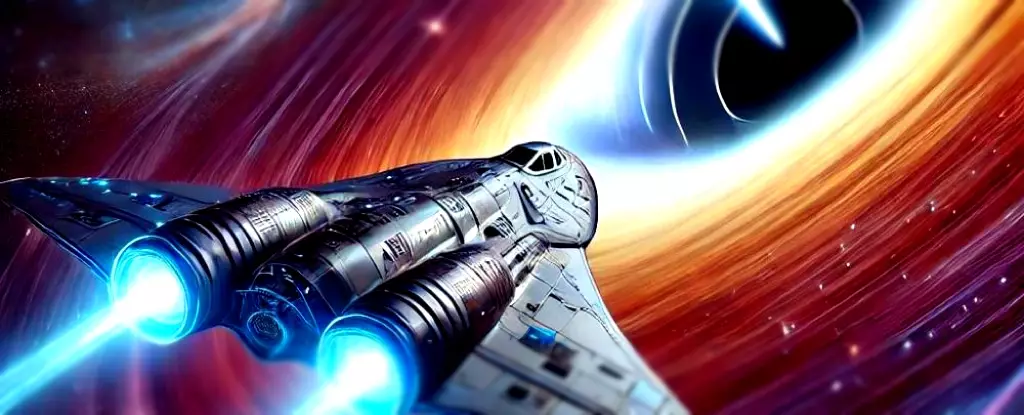The concept of warp drives has always been a fascinating element in science fiction, but its feasibility in reality remains a major challenge. The idea behind warp drives is to enable superliminal travel through hyperspace, allowing spaceships to travel faster than light speed. In theory, warp drives would create a bubble that could transport a spaceship across vast distances in space. However, the practical implementation of warp drives faces numerous hurdles, including the enormous amount of energy required and the need for exotic matter to sustain the warp field.
Black Holes and Warp Drives
Recent research by Remo Garattini and Kirill Zatrimaylov explores the potential scenario of a ship equipped with a warp drive entering a black hole. The study focuses on Schwarzschild black holes, which are theoretical constructs that represent simple, non-rotating, and non-charged black holes. The researchers theorized that a warp drive could survive inside a Schwarzschild black hole if the ship crossed the event horizon at a speed below that of light. The gravitational field of the black hole could potentially reduce the amount of negative energy needed to sustain the warp drive, creating possibilities for mini-warp drives in lab settings.
While the research opens up intriguing possibilities for the interaction between warp drives and black holes, there are still significant challenges to overcome. The generation of the immense energy required for warp field creation remains a major obstacle, along with the need for exotic matter with negative energy properties. Physicists like Miguel Alcubierre have proposed theoretical models for warp drives, but practical implementation is far from reality due to current limitations in understanding spacetime physics.
The study by Garattini and Zatrimaylov hints at the potential conversion of virtual particles into real ones within an electric field, leading to the creation of mini-warp drives. The researchers suggest that under certain conditions, a warp bubble moving slowly near a black hole could increase its entropy. However, unresolved issues regarding the interaction between warp drives and black holes pose significant challenges in understanding the thermodynamic aspects of these phenomena.
While the theoretical exploration of warp drives surviving black holes offers exciting possibilities for future research, numerous questions and obstacles remain. The intricate relationship between warp field dynamics and black hole characteristics raises fundamental issues in physics that require further investigation. As scientists delve deeper into the mysteries of quantum mechanics and spacetime physics, the prospect of warp technology becoming a reality may become more tangible. Ultimately, the intersection of warp drives and black holes presents a complex and intriguing area of study that could reshape our understanding of the universe.


Leave a Reply